| |||||||||||||||||||||||||||||||||||||||||||||||||||||||||||||||||||||||||||||||||||||||||||||||||||||||||||||||||||||||||||||||||||||||||||||||||||||||||
LIMA, PERU—The remains of eight people estimated to be 800 years old were discovered by workers laying gas pipes near Lima, according to an ...
| |||||||||||||||||||||||||||||||||||||||||||||||||||||||||||||||||||||||||||||||||||||||||||||||||||||||||||||||||||||||||||||||||||||||||||||||||||||||||
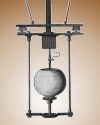
On 30 Jun 1879, some businessmen incorporated to form the California Electric Light Company, and within three months they had the first U.S. central station providing electricity to some nearby businesses and hotels. It was a cheaply-built, makeshift facility with dynamo, steam engine, boiler, fuel piles, oil and greasy waste all crammed into a small building. With little thought to the fire risks, unsurprisingly, the pioneering works burned on 24 Apr the next year. Undaunted a bigger, better facility was built. The article California Electric Light Company gives some of the early history of the enterprise, together with an interesting perspective from an insurance company inspector on the nature of the start-ups of that era.
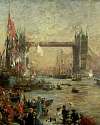
On 30 Jun 1894, the Tower Bridge was officially opened, the iconic bascule bridge across the River Thames in London. The foundation stone was laid on 21 Jun 1886. It was this newsletter's Feature for Today, earlier this month. If you missed it then, today is another chance to read the article from The Romance of Modern Engineering (1908).

On 30 Jun 1917, Sir Joseph Dalton Hooker was born, an eminent Victorian biologist and explorer who was one of Charles Darwin’s closest collaborators. Today's book pick is: Sir Joseph Dalton Hooker: Traveller and Plant Colle, by Ray Desmond, who provides a well-illustrated, well-written an in-depth outline of the travel which under-pinned this remarkable man’s contribution to botany.
Many gardeners and lovers of rhododendrons know of Hooker’s plant collecting expedition in the Himalayas, but few are aware of his participation in Sir James Clark Ross’ epic voyage to Antarctica in 1839-43, of his visits to Syria and Lebanon in 1860, to the Atlas Mountains in Morocco in 1871, and to the Rockies and California in 1877.
At some risk to his own safety and health (he came close to drowning in the Antarctic Ocean and was imprisoned by the Rajah of Sikkim), he discovered many new species of plants and introduced a number of attractive flowers into British gardens.
When Hooker encountered European species growing in the southern hemisphere he naturally wondered how they got there. He shared his theories on plant distribution and other topics of mutual interest with Darwin to whom he also sent scientific data acquired during his travels.
It is available from Amazon, typically about New from $29.95. Used from $15.15. (As of earlier time of writing - subject to change.)
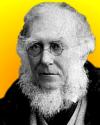 | All I ever aim to do is to put the Development hypothesis in the same coach as the creation one. It will only be a question of who is to ride outside & who in after all. |
 | The fact that this chain of life existed [at volcanic vents on the seafloor] in the black cold of the deep sea and was utterly independent of sunlight—previously thought to be the font of all Earth’s life—has startling ramifications. If life could flourish there, nurtured by a complex chemical process based on geothermal heat, then life could exist under similar conditions on planets far removed from the nurturing light of our parent star, the Sun. |
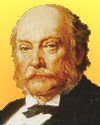 | One's instinct is at first to try and get rid of a discrepancy, but I believe that experience shows such an endeavour to be a mistake. What one ought to do is to magnify a small discrepancy with a view to finding out the explanation. |
| Before you look at today's web page, see if you can answer some of these questions about the events that happened on this day. Some of the names are very familiar. Others will likely stump you. Tickle your curiosity with these questions, then check your answers on today's web page. | |
| Births | |
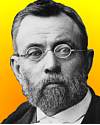 | Sir Ferdinand von Mueller, born 30 Jun 1825, migrated from his homeland to another country. He became its greatest 19th-century scientist, with an international botanical reputation. Mueller made contributions to many fields of science, but his major contribution was to botany. This fact is evident alone in the hundreds of this country’s plant names which are followed by “F. Muell.” In which country did he do his major work? |
 | Sir Joseph Dalton Hooker, born 30 Jun 1817, was an English botanist noted for his botanical travels and studies and for his encouragement of a certain scientist's theories. What other scientist's theories did he support? |
| Deaths | |
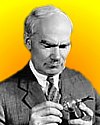 | Lee De Forest (1873-1961) was the American inventor of an important device which made possible live radio broadcasting and became the key component of all radio, telephone, radar, television, and computer systems before the invention of the transistor in 1947. What was this important device that he invented? |
 | John William Strut Rayleigh (1842-1919) was an English physical scientist who made fundamental discoveries in the fields of acoustics and optics that are basic to the theory of wave propagation in fluids. But when he received the Nobel Prize for Physics in 1904, it was for his successful isolation of a certain trace gas in the atmosphere. Which gas did he isolate? |
| Events | |
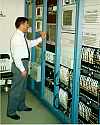 | On 30 Jun 1972, despite the super-accuracy of atomic clocks, a one second adjustment was made to the world’s time. Why was this adjustment made? |
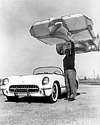 | On 30 Jun of a certain year, General Motors drove its first production model Corvette out of its factory in Flint, Michigan. It was notable as the the first car with a laminated-fiberglass body. The company produced 300 Corvette sports cars that same year. They all had a white exterior, red interior and black canvas convertible roof. In which decade was the Corvette first produced? |
 | On 30 Jun 1973, passengers aboard the French Concorde 001 supersonic jet had a special 74-minute observation opportunity while in flight. What did these passengers observe? |
 If you enjoy this newsletter, the website, or wish to offer encouragement or ideas, please send feedback by using your mail reader Reply button.
If you enjoy this newsletter, the website, or wish to offer encouragement or ideas, please send feedback by using your mail reader Reply button.